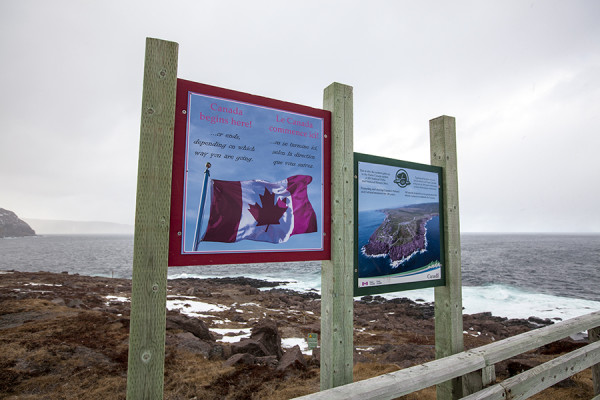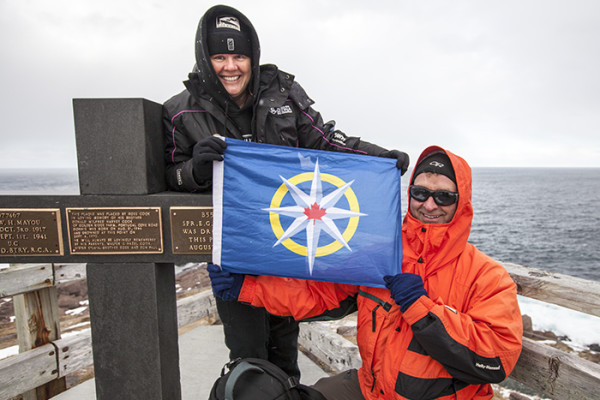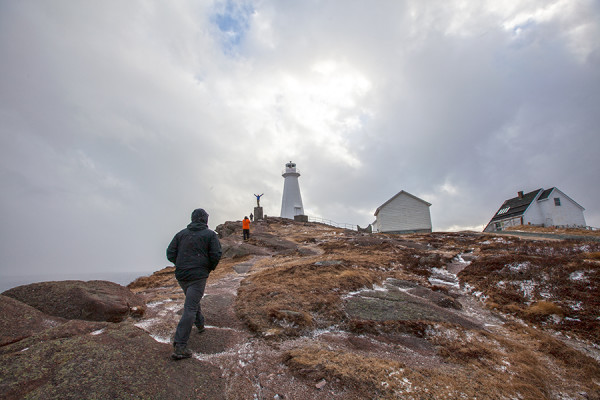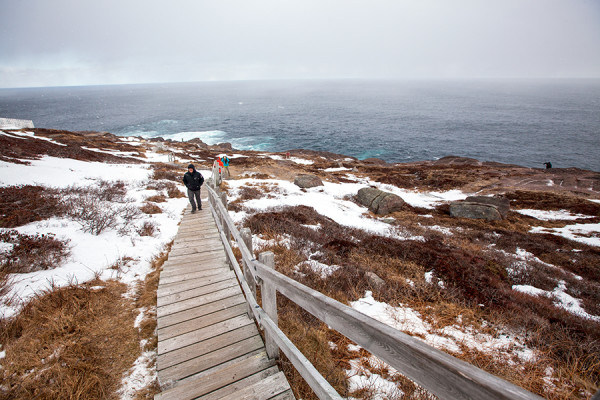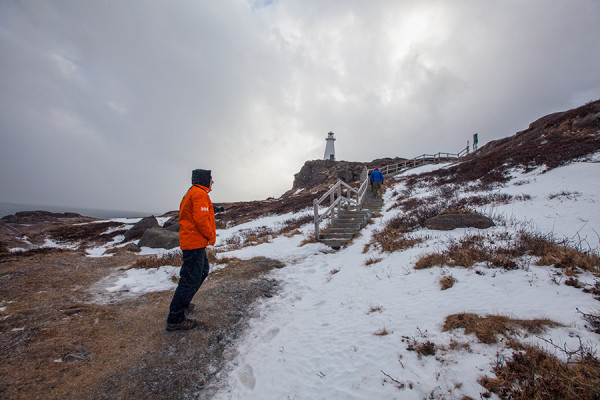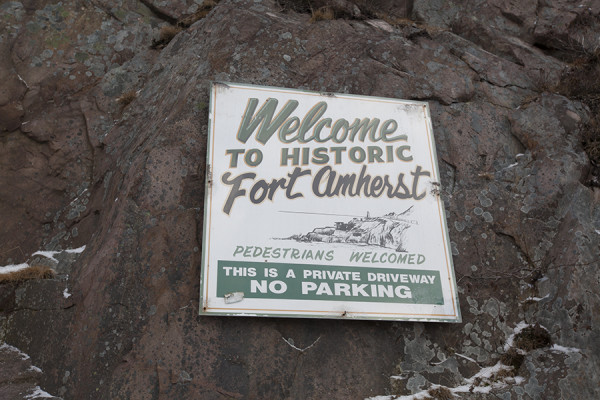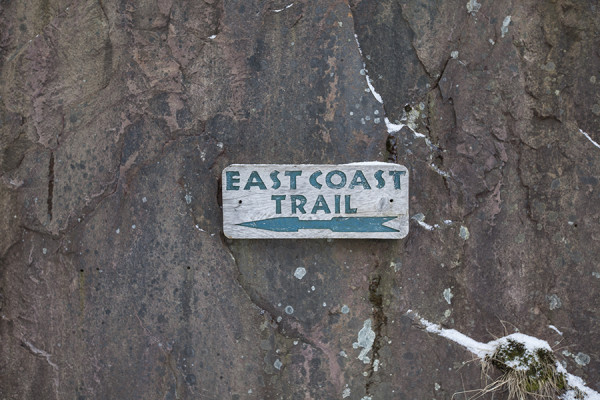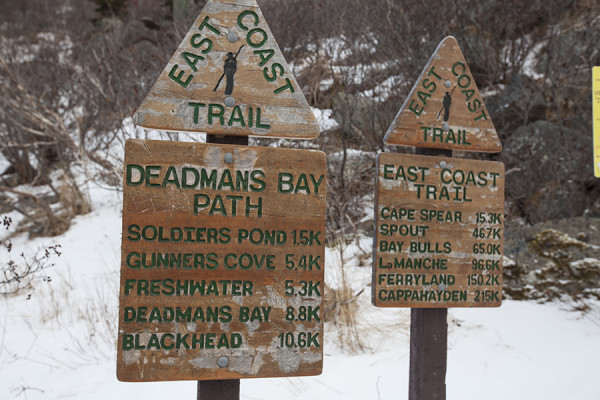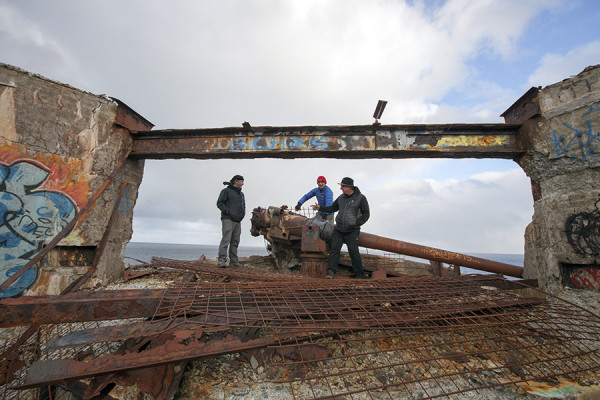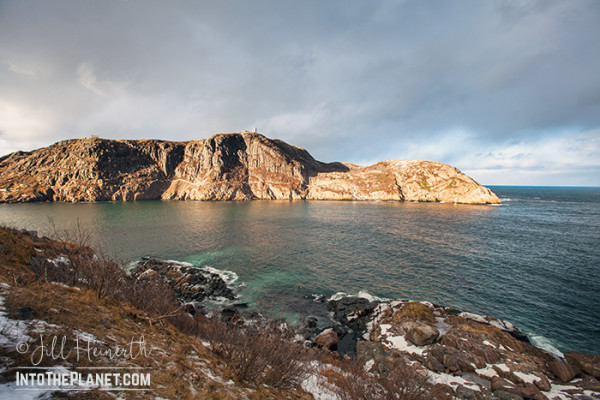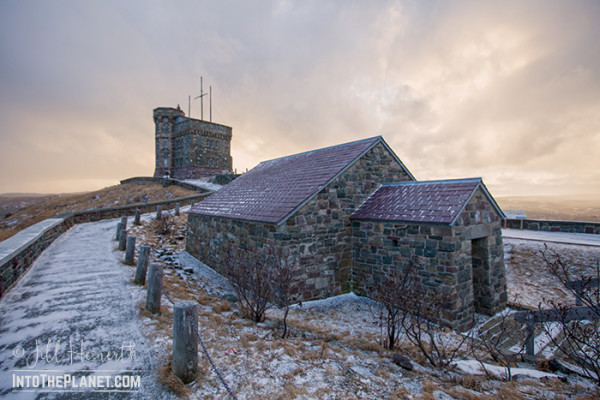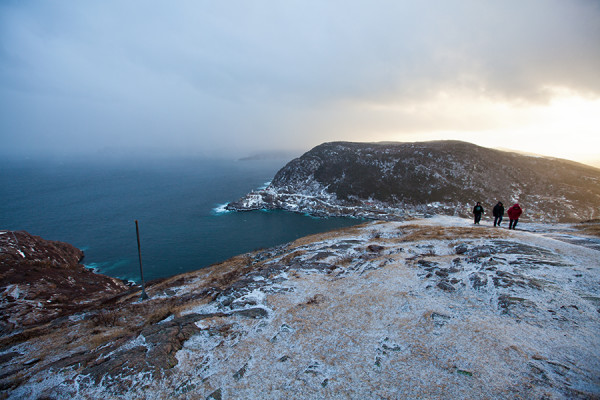Our team had an afternoon hike around St. John’s to get the blood flowing in the fresh winter air. We were able to see several Canadian Historical Sites and then enjoy traditional Newfoundland cuisine.
Our first stop was a visit to the Cape Spear Lighthouse which is perched on North America’s most easterly point. Constructed in 1836, the Cape Spear Lighthouse is still in service today. The winds were howling and light snow was blowing horizontally as we clambered up the rocks to the top of the hill where the beacon was brightly rotating in the storm clouds. One can only imagine the bone chilling cold that must creep through the batten boards of the house.
We moved on to Fort Amherst for our second walk. Completed in 1777, Fort Amherst was a British fortification guarding the mouth of St. John’s harbour. Fort Amherst lies in its strategic location and has a long history of use as a military defensive installation. Today is lay in ruins, but scaffolding around the lighthouse indicates that restoration efforts are underway. We passed the East Coast Trail markers that pointed back towards Cape Spear and beyond.
We drove through the colorful Battery area that locals call Jellybean Row with a final stop that took us up Signal Hill in a growing blizzard. The Cabot Tower, where Marconi received the first trans-Atlantic voice transmission in 1920 tops Signal Hill. It was built as a monument to John Cabot’s 1497 voyage to North America and to the 60th anniversary of Queen Victoria’s reign.
Cape Spear, the Eastern-most tip of Canada
Fort Amherst, St. John’s, Newfoundland
Cabot Tower at Signal Hill, St. John’s, Newfoundland
